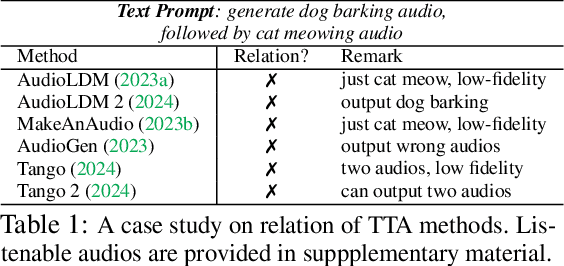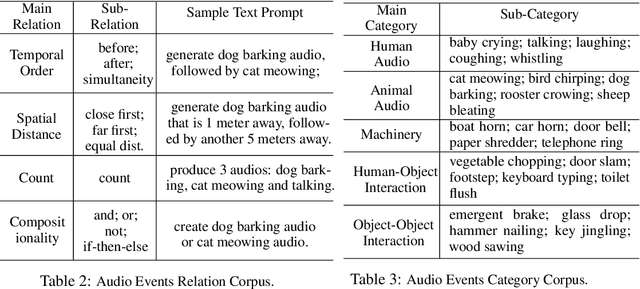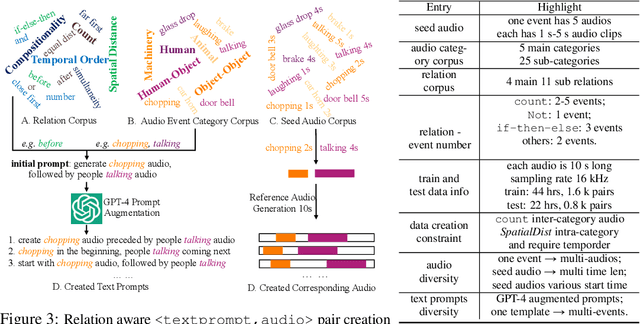Yuhang He
Boosting Domain Incremental Learning: Selecting the Optimal Parameters is All You Need
May 29, 2025Abstract:Deep neural networks (DNNs) often underperform in real-world, dynamic settings where data distributions change over time. Domain Incremental Learning (DIL) offers a solution by enabling continual model adaptation, with Parameter-Isolation DIL (PIDIL) emerging as a promising paradigm to reduce knowledge conflicts. However, existing PIDIL methods struggle with parameter selection accuracy, especially as the number of domains and corresponding classes grows. To address this, we propose SOYO, a lightweight framework that improves domain selection in PIDIL. SOYO introduces a Gaussian Mixture Compressor (GMC) and Domain Feature Resampler (DFR) to store and balance prior domain data efficiently, while a Multi-level Domain Feature Fusion Network (MDFN) enhances domain feature extraction. Our framework supports multiple Parameter-Efficient Fine-Tuning (PEFT) methods and is validated across tasks such as image classification, object detection, and speech enhancement. Experimental results on six benchmarks demonstrate SOYO's consistent superiority over existing baselines, showcasing its robustness and adaptability in complex, evolving environments. The codes will be released in https://github.com/qwangcv/SOYO.
Beyond CLIP Generalization: Against Forward&Backward Forgetting Adapter for Continual Learning of Vision-Language Models
May 12, 2025Abstract:This study aims to address the problem of multi-domain task incremental learning~(MTIL), which requires that vision-language models~(VLMs) continuously acquire new knowledge while maintaining their inherent zero-shot recognition capability. Existing paradigms delegate the testing of unseen-domain samples to the original CLIP, which only prevents the degradation of the model's zero-shot capability but fails to enhance the generalization of the VLM further. To this end, we propose a novel MTIL framework, named AFA, which comprises two core modules: (1) an against forward-forgetting adapter that learns task-invariant information for each dataset in the incremental tasks to enhance the zero-shot recognition ability of VLMs; (2) an against backward-forgetting adapter that strengthens the few-shot learning capability of VLMs while supporting incremental learning. Extensive experiments demonstrate that the AFA method significantly outperforms existing state-of-the-art approaches, especially in few-shot MTIL tasks, and surpasses the inherent zero-shot performance of CLIP in terms of transferability. The code is provided in the Supplementary Material.
Learn by Reasoning: Analogical Weight Generation for Few-Shot Class-Incremental Learning
Mar 27, 2025Abstract:Few-shot class-incremental Learning (FSCIL) enables models to learn new classes from limited data while retaining performance on previously learned classes. Traditional FSCIL methods often require fine-tuning parameters with limited new class data and suffer from a separation between learning new classes and utilizing old knowledge. Inspired by the analogical learning mechanisms of the human brain, we propose a novel analogical generative method. Our approach includes the Brain-Inspired Analogical Generator (BiAG), which derives new class weights from existing classes without parameter fine-tuning during incremental stages. BiAG consists of three components: Weight Self-Attention Module (WSA), Weight & Prototype Analogical Attention Module (WPAA), and Semantic Conversion Module (SCM). SCM uses Neural Collapse theory for semantic conversion, WSA supplements new class weights, and WPAA computes analogies to generate new class weights. Experiments on miniImageNet, CUB-200, and CIFAR-100 datasets demonstrate that our method achieves higher final and average accuracy compared to SOTA methods.
Space Rotation with Basis Transformation for Training-free Test-Time Adaptation
Feb 27, 2025Abstract:With the development of visual-language models (VLM) in downstream task applications, test-time adaptation methods based on VLM have attracted increasing attention for their ability to address changes distribution in test-time. Although prior approaches have achieved some progress, they typically either demand substantial computational resources or are constrained by the limitations of the original feature space, rendering them less effective for test-time adaptation tasks. To address these challenges, we propose a training-free feature space rotation with basis transformation for test-time adaptation. By leveraging the inherent distinctions among classes, we reconstruct the original feature space and map it to a new representation, thereby enhancing the clarity of class differences and providing more effective guidance for the model during testing. Additionally, to better capture relevant information from various classes, we maintain a dynamic queue to store representative samples. Experimental results across multiple benchmarks demonstrate that our method outperforms state-of-the-art techniques in terms of both performance and efficiency.
SoundLoc3D: Invisible 3D Sound Source Localization and Classification Using a Multimodal RGB-D Acoustic Camera
Dec 22, 2024Abstract:Accurately localizing 3D sound sources and estimating their semantic labels -- where the sources may not be visible, but are assumed to lie on the physical surface of objects in the scene -- have many real applications, including detecting gas leak and machinery malfunction. The audio-visual weak-correlation in such setting poses new challenges in deriving innovative methods to answer if or how we can use cross-modal information to solve the task. Towards this end, we propose to use an acoustic-camera rig consisting of a pinhole RGB-D camera and a coplanar four-channel microphone array~(Mic-Array). By using this rig to record audio-visual signals from multiviews, we can use the cross-modal cues to estimate the sound sources 3D locations. Specifically, our framework SoundLoc3D treats the task as a set prediction problem, each element in the set corresponds to a potential sound source. Given the audio-visual weak-correlation, the set representation is initially learned from a single view microphone array signal, and then refined by actively incorporating physical surface cues revealed from multiview RGB-D images. We demonstrate the efficiency and superiority of SoundLoc3D on large-scale simulated dataset, and further show its robustness to RGB-D measurement inaccuracy and ambient noise interference.
* Accepted by WACV2025
RiTTA: Modeling Event Relations in Text-to-Audio Generation
Dec 20, 2024



Abstract:Despite significant advancements in Text-to-Audio (TTA) generation models achieving high-fidelity audio with fine-grained context understanding, they struggle to model the relations between audio events described in the input text. However, previous TTA methods have not systematically explored audio event relation modeling, nor have they proposed frameworks to enhance this capability. In this work, we systematically study audio event relation modeling in TTA generation models. We first establish a benchmark for this task by: 1. proposing a comprehensive relation corpus covering all potential relations in real-world scenarios; 2. introducing a new audio event corpus encompassing commonly heard audios; and 3. proposing new evaluation metrics to assess audio event relation modeling from various perspectives. Furthermore, we propose a finetuning framework to enhance existing TTA models ability to model audio events relation. Code is available at: https://github.com/yuhanghe01/RiTTA
GridShow: Omni Visual Generation
Dec 17, 2024Abstract:In this paper, we introduce GRID, a novel paradigm that reframes a broad range of visual generation tasks as the problem of arranging grids, akin to film strips. At its core, GRID transforms temporal sequences into grid layouts, enabling image generation models to process visual sequences holistically. To achieve both layout consistency and motion coherence, we develop a parallel flow-matching training strategy that combines layout matching and temporal losses, guided by a coarse-to-fine schedule that evolves from basic layouts to precise motion control. Our approach demonstrates remarkable efficiency, achieving up to 35 faster inference speeds while using 1/1000 of the computational resources compared to specialized models. Extensive experiments show that GRID exhibits exceptional versatility across diverse visual generation tasks, from Text-to-Video to 3D Editing, while maintaining its foundational image generation capabilities. This dual strength in both expanded applications and preserved core competencies establishes GRID as an efficient and versatile omni-solution for visual generation.
DriveMLLM: A Benchmark for Spatial Understanding with Multimodal Large Language Models in Autonomous Driving
Nov 20, 2024Abstract:Autonomous driving requires a comprehensive understanding of 3D environments to facilitate high-level tasks such as motion prediction, planning, and mapping. In this paper, we introduce DriveMLLM, a benchmark specifically designed to evaluate the spatial understanding capabilities of multimodal large language models (MLLMs) in autonomous driving. DriveMLLM includes 2,734 front-facing camera images and introduces both absolute and relative spatial reasoning tasks, accompanied by linguistically diverse natural language questions. To measure MLLMs' performance, we propose novel evaluation metrics focusing on spatial understanding. We evaluate several state-of-the-art MLLMs on DriveMLLM, and our results reveal the limitations of current models in understanding complex spatial relationships in driving contexts. We believe these findings underscore the need for more advanced MLLM-based spatial reasoning methods and highlight the potential for DriveMLLM to drive further research in autonomous driving. Code will be available at \url{https://github.com/XiandaGuo/Drive-MLLM}.
LOBG:Less Overfitting for Better Generalization in Vision-Language Model
Oct 14, 2024Abstract:Existing prompt learning methods in Vision-Language Models (VLM) have effectively enhanced the transfer capability of VLM to downstream tasks, but they suffer from a significant decline in generalization due to severe overfitting. To address this issue, we propose a framework named LOBG for vision-language models. Specifically, we use CLIP to filter out fine-grained foreground information that might cause overfitting, thereby guiding prompts with basic visual concepts. To further mitigate overfitting, we devel oped a structural topology preservation (STP) loss at the feature level, which endows the feature space with overall plasticity, allowing effective reshaping of the feature space during optimization. Additionally, we employed hierarchical logit distilation (HLD) at the output level to constrain outputs, complementing STP at the output end. Extensive experimental results demonstrate that our method significantly improves generalization capability and alleviates overfitting compared to state-of-the-art approaches.
Prompt-Agnostic Adversarial Perturbation for Customized Diffusion Models
Aug 20, 2024



Abstract:Diffusion models have revolutionized customized text-to-image generation, allowing for efficient synthesis of photos from personal data with textual descriptions. However, these advancements bring forth risks including privacy breaches and unauthorized replication of artworks. Previous researches primarily center around using prompt-specific methods to generate adversarial examples to protect personal images, yet the effectiveness of existing methods is hindered by constrained adaptability to different prompts. In this paper, we introduce a Prompt-Agnostic Adversarial Perturbation (PAP) method for customized diffusion models. PAP first models the prompt distribution using a Laplace Approximation, and then produces prompt-agnostic perturbations by maximizing a disturbance expectation based on the modeled distribution. This approach effectively tackles the prompt-agnostic attacks, leading to improved defense stability. Extensive experiments in face privacy and artistic style protection, demonstrate the superior generalization of our method in comparison to existing techniques.
 Add to Chrome
Add to Chrome Add to Firefox
Add to Firefox Add to Edge
Add to Edge